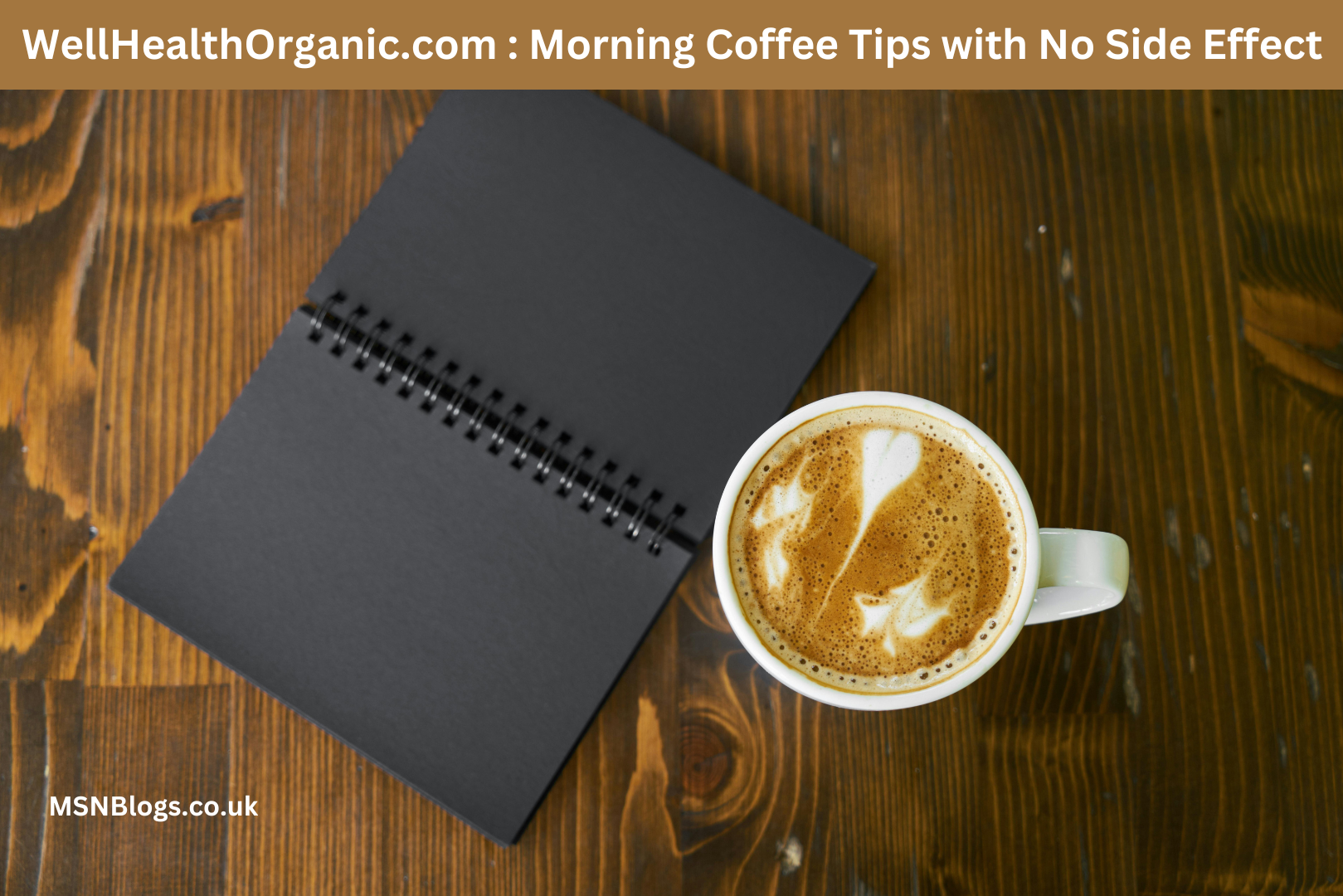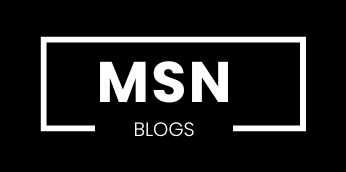Health
WellHealthOrganic.com : Morning Coffee Tips with No Side Effect

Introduction to WELLHEALTHORGANIC.COM – a health and wellness website
Welcome to WELLHEALTHORGANIC.COM, your go-to source for all things health and wellness. If you’re a coffee lover, you know that the right cup of joe can set a positive tone for your day. But how can you enjoy that morning ritual without any pesky side effects? Dive into our morning coffee tips designed specifically to enhance your experience while keeping those jitters at bay. Whether you’re brewing from home or grabbing a cup on the go, we have insights that will transform your caffeine routine into a delightful and healthy start each day. Let’s explore how you can savour every sip!
WellHealthOrganic.com : Morning Coffee Tips with No Side Effect
WellHealthOrganic.com : Morning Coffee Tips with No Side Effect

WELLHEALTHORGANIC.COM is your go-to source for health and wellness tips, especially when it comes to starting your day right. Morning coffee can be a delightful ritual that fuels your body and mind without unwanted side effects.
The first step in optimizing your morning brew is choosing high-quality beans. Organic options often provide richer flavours and fewer impurities.
Consider brewing methods too. A French press or pour-over technique can enhance taste while minimizing acidity, which may lead to discomfort for some drinkers.
Timing plays an essential role as well. Aim to enjoy your cup within the mid-morning window for the best energy boost, avoiding those early hours when cortisol levels peak.
Experimenting with organic additives—like cinnamon or almond milk—can elevate flavour profiles while offering additional health benefits without adverse effects.
The benefits of starting your day with a cup of coffee
Starting your day with a cup of coffee can set a positive tone for the hours ahead. It acts as a gentle wake-up call, helping to shake off any lingering sleepiness.
Moreover, caffeine stimulates the brain’s neurotransmitters like dopamine and serotonin. This stimulation can improve focus and cognitive function. Whether you’re diving into work or tackling daily tasks, coffee often brings clarity.
Regular consumption may even bolster metabolism slightly, aiding in weight management efforts when combined with a balanced diet.
It’s no wonder many individuals cherish their morning ritual of savouring that first sip! Each cup holds potential benefits while offering comfort wrapped in warmth and flavour.
How to make the perfect cup of coffee without any side effects

Creating the perfect cup of coffee starts with quality beans. Choose organic, freshly roasted coffee for a rich flavour and fewer additives. Grinding your own beans just before brewing elevates freshness.
Water temperature matters too. Aim for 195°F to 205°F; this range extracts essential oils without bitterness. Use filtered water to enhance taste.
Mind your ratios! A general rule is two tablespoons of coffee per six ounces of water. Adjust according to your preference but avoid overdoing it, as too much caffeine can lead to unwanted jitters.
Brewing methods vary—French press, pour-over, or drip machines each offers unique flavors. Experiment until you find what resonates with you.
These adjustments not only boost taste but also align with healthier choices in your morning routine.
The best time to drink coffee for maximum benefits
Timing your coffee consumption can significantly enhance its benefits. The best time to drink coffee is typically between 9:30 AM and 11:30 AM. During this window, cortisol levels in the body begin to dip, making you more receptive to caffeine’s stimulating effects.
Drinking coffee too early may clash with peak cortisol production around 8 AM. This timing can diminish the invigorating impact of your morning brew.
For those who prefer an afternoon pick-me-up, aim for after lunch but before 2 PM. This helps avoid interference with sleep patterns later in the day while still providing that much-needed alertness surge.
Incorporating organic and healthy ingredients into your morning coffee routine
Transforming your morning coffee routine can be as simple as adding organic and healthy ingredients. Start by choosing high-quality, organic coffee beans. This ensures you enjoy a pure flavour without harmful pesticides.
Next, consider enriching your brew with superfoods like cinnamon or turmeric. These spices not only enhance taste but also provide powerful anti-inflammatory benefits. A sprinkle of these can elevate your cup while supporting overall health.
Nut milk, such as almond or oat milk, offers a creamy texture without the added sugars found in traditional creamers. They are rich in nutrients and provide a dairy-free alternative that many appreciate.
Experimenting with different combinations keeps mornings exciting and fuels your body with wholesome goodness right from the start.
Alternative options for caffeine-free mornings
For those seeking a caffeine-free start to their day, there are delightful alternatives to coffee. Herbal teas, such as chamomile or peppermint, offer soothing flavours that awaken the senses without jitters.
Try warm lemon water for a refreshing boost. It’s hydrating and provides vitamin C, setting a positive tone for your morning routine.
Another option is golden milk—made from turmeric and almond milk—which has anti-inflammatory properties and a rich taste that’s both comforting and invigorating.
If you’re looking for something with more substance, consider smoothies packed with greens like spinach or kale. Add fruits for sweetness and protein powder to keep you full longer.
Don’t overlook chicory root coffee. It’s caffeine-free yet delivers a robust flavour reminiscent of traditional coffee, making it an excellent substitute for your morning ritual.
FAQs
Curious about your coffee routine? You’re not alone. Many have questions when it comes to enjoying that morning cup without the jitters.
One common query is whether different brewing methods affect caffeine levels. Yes, they do! Espresso has more concentrated caffeine than drip coffee, while cold brew tends to be smoother and less acidic.
Another frequent concern involves timing. When’s the best time to indulge in your coffee? It’s typically recommended to enjoy it mid-morning for optimal energy boost without a crash later on.
Are you wondering about acidity? Choosing low-acid coffee options can help minimize digestive discomfort while still delivering that delightful flavour you love.
Feel free to explore these tips further as you refine your perfect morning routine!
Conclusion: WellHealthOrganic.com : Morning Coffee Tips with No Side Effect
Starting your day with a well-prepared cup of coffee can set a positive tone for whatever comes next. By following the insights and tips provided by WELLHEALTHORGANIC.COM, you can enjoy all the benefits that coffee has to offer without any negative side effects. From choosing organic ingredients to timing your brew just right, every detail counts.
Remember, the journey towards healthy living includes finding balance in what you consume each morning. Whether you’re seeking energy boosts or simply savouring the rich flavours of your beverage, there are always ways to enhance your experience while being mindful of your health.
WellHealthOrganic.com : Morning Coffee Tips with No Side Effect
As you refine your morning routine, consider experimenting with caffeine-free options too. This opens up an array of delicious possibilities that keep mornings exciting and refreshing.
Embrace these practical tips from WELLHEALTHORGANIC.COM as part of a holistic approach to wellness. With careful attention paid to how you craft your morning ritual, you’ll find joy and satisfaction in every sip—minus any unwanted side effects. Enjoy crafting those perfect cups!
Also read: TheSparkShop.in Clothing Men
Health
Pre-existing Condition Coverage in GroupMedical Insurance

Group medical insurance is a leverage for the workers, providing financial protection for
the medical care prices. One vital aspect of these plans is coverage for pre-existing
conditions. Pre-existing conditions are health-related issues and diseases that people
have before joining the insurance plan—examples include hypertension, asthma, and
diabetes. Knowing how group medical insurance manages pre-existing conditions is
vital for workers and managers. Here is a simple explanation of how and why it is
essential.
Pre-existing Conditions
Pre-existing conditions are any medical problems and health issues that people were
identified with and treated for before their insurance policy. Involve:
- Diseases, like diabetes and high blood pressure
- Any surgery in the past
- Heath issues like asthma and arthritis.
These conditions need continual treatment and regular medication, making them more
expensive for the insurance giver to cover.
Why Are Pre-existing Conditions Vital in Insurance?
Pre-existing conditions are necessary because they influence insurer prices and risk
management companies’ standards and coverage limits. Someone with pre-existing
conditions will likely require medical care, which improves the insurer’s price. Group
medical insurance policies are designed for different people’s plans, making them more
inclusive and worker-friendly.
Group Medical Insurance Covers Pre-existing Conditions
In many nations involving the United Arab Emirates Emirates group medical insurance
covers pre-existing conditions. How it works:
- In the United Arab Emirates, laws of health insurance require coverage to cover
all pre-existing conditions under group medical insurance plans. This ensures
that workers get compulsory care for continual health problems without stressing
about the high price. - Various policies involve waiting time for the previous existing conditions.
workers might need to wait a particular time, like 6 to 7 months, before claims
relevant to pre existing conditions are covered. The manager must examine all
the details when choosing the policy. - Depending on the policy, coverage for pre-existing conditions may be complete or
half. Complete coverage pays for all relevant expenses, and half coverage may set
limits on treatment and medications. - Managers may pay more premiums for the group plans that involve extensive
coverage for pre-existing conditions. The Overall price is shared across the
group, making it more effective than people’s plans.
Vital Tips for Every Employers
- Work with the insurer to determine the policy that maintains coverage for the
existing conditions with premiums. - Give workers full details about the policy involving waiting time and restrictions
for pre-existing conditions. - The group medical insurance plan is inspected daily to ensure it meets workers’
requirements and connects with a budget. - Select reliable Dubai insurance agents known for its terms and effective claims
management.
Conclusion
Pre-existing conditions are an important part of group medical insurance, ensuring
workers get the care they require without financial worry. In the United Arab Emirates,
necessary coverage for pre-existing conditions under group policies shows the
commitment to worker health and well-being. By knowing how this coverage works and
selecting the policy, managers can create a good working environment while remaining
flexible with regulation. This protects worker health and strengthens the company’s
reputation as a caring and responsible manager.
Health
Maryland’s Leading Approaches in Behavioral Therapy Maryland and Relationship Counseling

Behavioral therapy in Maryland has risen as a pivotal hub for advanced and relationship counseling due to its diverse, inclusive, and scientifically backed practices. This state has become a beacon for mental health services, setting standards through innovative therapeutic models and comprehensive care strategies aimed at improving mental wellness and interpersonal relationships. For those pursuing certification in this field, understanding the details of the certification process, such as “how many questions are on the RBT exam,” is essential for ensuring that practitioners are well-prepared and meet the high standards required for effective therapy.
Historical Context and Development
Behavioral therapy in Maryland has evolved significantly over the decades. Historically, mental health services were primarily institutional, with a limited focus on outpatient therapy and individual counseling. This began to change in the mid-20th century as new research emerged in psychology and psychiatry, emphasizing the importance of cognitive-behavioral therapy (CBT) and interpersonal processes. Maryland’s universities and research institutions were at the forefront of these changes, contributing to groundbreaking studies that led to more effective therapeutic techniques.
Diverse Approaches in Behavioral Therapy
One of Maryland’s leading approaches to behavioral therapy is CBT. This method focuses on recognizing and changing harmful thought and behavior patterns that fuel mental health problems. It has shown promise in the treatment of psychiatric diseases such as depression, anxiety, and substance abuse. Many therapists in Maryland utilize CBT as a primary treatment modality due to its evidence-based success rate.
Another innovative approach gaining popularity in Maryland is mindfulness-based cognitive therapy (MBCT). Developed from traditional Buddhist meditation practices, MBCT teaches individuals mindful awareness techniques to manage their thoughts, emotions, and behaviors. This method is well-liked among Maryland therapists because of its encouraging outcomes in lowering stress, anxiety, and sadness.
Maryland is also home to some of the country’s foremost dialectical behavior therapy (DBT) experts. DBT combines CBT with mindfulness to help individuals regulate emotions and improve interpersonal relationships. It has proven effective in treating borderline personality disorder and other disorders that involve difficulty regulating emotions.
Holistic Treatment for Mental Wellness
In addition to traditional psychotherapy approaches, Maryland offers holistic treatment options for mental wellness. These include art therapy, music therapy, equine-assisted therapy, and nature-based therapies such as eco-therapy and horticulture therapy. These approaches recognize the mind-body connection and aim to promote overall well-being through non-traditional means.
Art therapy, for example, uses innovative methods to support people in self-expression and emotional exploration. Music therapy utilizes music as a means of communication and emotional expression. Equine-assisted therapy aims to engage patients in a therapeutic setting, promoting self-awareness, trust-building, and emotional regulation. Nature-based therapies focus on connecting with nature to improve mental wellness.
Pioneering Techniques in Behavioral Therapy
One of the leading methods in Maryland is cognitive-behavioral therapy (CBT), which helps clients challenge and change unhelpful cognitive distortions and behaviors, enhances emotional control, The state boasts several practitioners specializing in CBT, ensuring individuals can access structured and effective treatment plans.
Dialectical behavior therapy (DBT) is another approach that has gained traction, particularly for its effectiveness in treating conditions such as borderline personality disorder and chronic suicidal ideation. Standard cognitive-behavioral methods for reality assessment and emotion regulation are combined with mindful awareness, distress tolerance, and acceptance concepts. Therapy programs in Baltimore and surrounding areas have integrated DBT into their treatment regimens with measurable success, making it a cornerstone of treatment for patients dealing with intense emotional experiences.
Relationship Counseling and its Importance
Enhancing interpersonal relationships is crucial in Maryland’s mental health strategy. Relationship counseling aims to improve the interactions between partners, families, and friends, recognizing that the strength of these connections significantly impacts individual mental health. Therapists in Maryland apply various techniques, including emotionally-focused therapy (EFT) and the Gottman Method, to help couples understand and improve their emotional responses and communication patterns.
Innovative Practices and Accessibility
Maryland is recognized not only for its established practices but also for its innovative approaches to expanding therapy accessibility. Teletherapy has become integral to service delivery, breaking geographical barriers and allowing for more flexible scheduling. This mode of therapy, coupled with mobile health apps and online support groups, has been particularly beneficial for younger clients and those who might otherwise face obstacles in accessing traditional office-based therapy sessions. As the world continues to evolve, Maryland’s mental health professionals remain at the forefront of utilizing technology and adapting to modern therapy methods. Overall, the diverse approaches and pioneering techniques in behavioral therapy make Maryland a leader in providing comprehensive and effective mental health services. Whether through traditional psychotherapy, holistic treatments, or innovative practices, individuals in Maryland have access to a wide range of options for improving their mental wellness. This commitment to promoting mental health is reflected in the state’s universities and research institutions and its progressive mindset toward exploring alternative approaches. With such a strong foundation and dedication to innovation, it is no surprise that Maryland continues to be a hub for advancements in mental health treatment.
The Role of Inclusivity and Cultural Competence
An important aspect of Maryland’s leading position in behavioral therapy and relationship counseling is the emphasis on inclusivity and cultural competence. Mental health professionals in the state actively engage in training and continuing education to ensure that therapy is accessible and relevant to clients from diverse cultural backgrounds. This approach not only broadens the reach of mental health treatments but also raises the possibility of successful outcomes for clients whose mental health systems may have previously been underserved. By prioritizing inclusivity and cultural competence, Maryland’s mental health professionals address clients’ needs and promote a more inclusive and diverse society. In conclusion, Maryland’s multidimensional approach to mental health treatment sets it apart as a leader in the field. From traditional psychotherapy methods to innovative practices, The state provides many choices for anyone looking to improve their mental wellness. With its commitment to inclusivity and cultural competence, Maryland is paving the way for universal access to effective mental health services that positively impact individuals, families, and communities. So whether you are looking for therapy yourself or searching on behalf of a loved one, know that you are in good hands in Maryland, where mental health is a top priority. So why wait? Today, take the first step toward improving your mental health and explore the diverse therapy options available in Maryland. You won’t regret it!
Challenges and Future Directions
Despite these advances, challenges remain in meeting the mental health needs of Maryland’s diverse population. There is an ongoing need for more bilingual counselors to serve non-English-speaking communities and for continued funding to reduce consumer costs. Maryland continues to address these gaps through policy development and community outreach programs.
Moving forward, Maryland aims to integrate more experiential and holistic approaches into its therapy models, including mindfulness-based therapies and community-based interventions focusing on overall well-being rather than isolated treatment. Programs that address substance abuse and dual diagnosis are being expanded to address the growing need for comprehensive care plans that encompass all aspects of mental health and wellness.
Conclusion
Move Up ABA Maryland, LLC leadership position in behavioral therapy and relationship counseling is characterized by its adaptive and inclusive approaches, rooted in scientific research and community needs. As the mental health landscape continues to evolve, Maryland is set to remain at the forefront, paving the way for holistic and accessible care.
Health
Breaking the Silence: Understanding and Addressing Depression in Men

Presentation: The Secret Battle of Men and Despondency
Depression in men is often seen as a condition that fundamentally influences ladies, yet it is similarly inescapable among men. Regardless of developing attention to emotional well-being issues, the quiet battle that numerous men face remains to a great extent disregarded. Conventional perspectives on manliness, cultural assumptions, and an overall hesitance to look for help add to the intangibility of male discouragement. This acquaintance points shed light on the one-of-a-kind difficulties men face, stressing the requirement for a more profound comprehension and more compelling emotionally supportive networks.
The Shame Encompassing In Depreesion In Men
The shame encompassing psychological wellness is especially articulated for men, who are frequently expected to epitomize aloofness and profound flexibility. Phrases like “man up” or “young men don’t cry” sustain the conviction that communicating weakness is an indication of a shortcoming. This social assumption deters men from recognizing their close-to-home battles and looking for help. The effect of this disgrace can be decimating, prompting underdiagnosis and lacking treatment of wretchedness among men. Tending to this shame is vital for establishing a climate where men have a solid sense of reassurance to communicate their sentiments and look for help.
Perceiving the Signs: How Discouragement Appears in Men
Depression in men can show uniquely in contrast to in ladies. While trouble and sadness are normal side effects, men are bound to display outrage, peevishness, and actual side effects. Men may likewise encounter gloom through conduct changes, for example, expanded risk-taking, substance misuse, or withdrawal from social exercises. Understanding these appearances is fundamental for distinguishing gloom in men, particularly since they may not generally present their sentiments straightforwardly or look for help promptly.
The Effect of Cultural Assumptions on Men’s Psychological well-being
Cultural assumptions play a huge part in molding men’s emotional wellness. Customary orientation jobs direct that men ought to be suppliers, defenders, and genuinely unemotional. These assumptions can cause huge strain, prompting insecurities and profound trouble when men battle to fulfill these guidelines. The strain of adjusting to these jobs can intensify emotional wellness issues and deter men from looking for help. Perceiving and testing these cultural standards is indispensable for further developing psychological well-being results for men.
Risk Factors and Triggers for Despondency in Men
A few gamble factors and triggers can add to discouragement in men. These incorporate hereditary inclination, ongoing pressure, injury, and critical life-altering events like employment cutbacks or relationship issues. Men are additionally in danger because of social separation and hardships in communicating feelings. Early recognizable proof and mediation are pivotal in overseeing and relieving the effect of gloom.
The Job of Correspondence in Tending to Gloom
Viable correspondence is a foundation of tending to sorrow in men. Empowering open exchange about emotional well-being can assist with separating boundaries and decreasing shame. For men battling with gloom, tracking down a place of refuge to communicate their sentiments is fundamental. This can include steady discussions with companions, relatives, or psychological wellness experts. Undivided attention and compassion are key parts of cultivating a climate where men feel happy with examining their psychological well-being difficulties.
Successful Treatment Choices: Treatment, Drug, and Way of Life Changes
Treatment for symptoms of depression in men can be multi-layered, including treatment, medicine, and way of life changes. Mental Social Treatment (CBT) is a typical and viable remedial methodology that helps people recognize and change pessimistic idea designs.
Emotionally Supportive Networks: Building an Organization for Men Battling with Gloom
Building a hearty encouraging group of people is critical for depression in men. Emotionally supportive networks can incorporate family, companions, support gatherings, and psychological wellness experts. Empowering men to associate with other people who comprehend their encounters can offer close-to-home help and pragmatic guidance. Support bunches explicitly for men can offer a feeling of local area and decrease sensations of seclusion. Laying out an organization of help can improve the general prosperity and recuperation of men confronting melancholy.
Precaution Measures: Advancing Emotional Well-being and Strength
Precaution estimates assume an essential part in advancing emotional wellness and flexibility among men. Depression symptoms in men incorporates cultivating a negative psychological wellness culture, empowering open discussions about feelings, and giving assets to stretch administration. Moreover, advancing balance between fun and serious activities and empowering customary actual work can add to generally speaking mental prosperity. Proactive measures can assist with decreasing the gamble of wretchedness and improve personal satisfaction.
Individual Stories: Ending the Quietness through Shared Encounters
Individual stories can be amazing assets in ending the quietness encompassing male misery. Sharing encounters of battle and recuperation can give trust and consolation to others confronting comparable difficulties. Individual stories can likewise assist with decreasing shame and cultivate a feeling of grit among men. By featuring different encounters and excursions, we can make a more comprehensive exchange around psychological wellness and urge others to seek help and backing.
Assets and Backing: Where to Go for Help
Admittance to assets and backing is significant for men battling with sadness. This incorporates psychological wellness administrations, such as treatment and directing, emergency hotlines, and support gatherings. Online assets and associations committed to men’s psychological well-being can give important data and help. Men really should know about these assets and feel engaged to connect for help. Guaranteeing that these assets are open and broadly advanced can have a huge effect in tending to male wretchedness.
End: Pushing Ahead with Understanding and Sympathy
Addressing depression in men requires aggregate work to separate shame, further develop mindfulness, and offer compelling help. By encouraging comprehension and sympathy, we can establish a climate where men have a good sense of security to communicate their battles and look for help. Pushing ahead, it is vital to keep upholding psychological wellness mindfulness, supporting examination, and advancing comprehensive practices. With purposeful exertion, we can take critical steps in tending to male wretchedness and working on the psychological wellness and prosperity of men all over the place.
-

 Sports8 months ago
Sports8 months agoNepal National Cricket Team vs India National Cricket Team Timeline
-

 Sports8 months ago
Sports8 months agoCanada National Cricket Team VS Nepal National Cricket Team Match Scorecard
-

 Tech7 months ago
Tech7 months agoTop 13 Instagram Story Viewer Sites
-

 Blog8 months ago
Blog8 months agoThe Importance of Relaxing and Unwinding as a Student
-

 Tech7 months ago
Tech7 months agoUnveiling the Best Special Occasion Cufflinks in the UK
-

 Sports8 months ago
Sports8 months agoIndia National Football Team vs Qatar National Football Team Timeline
-

 Tech8 months ago
Tech8 months agoExplore what AML software can do for your business
-

 Health7 months ago
Health7 months agoExploring Thiamine’s Role in Muscle Function and Recovery
